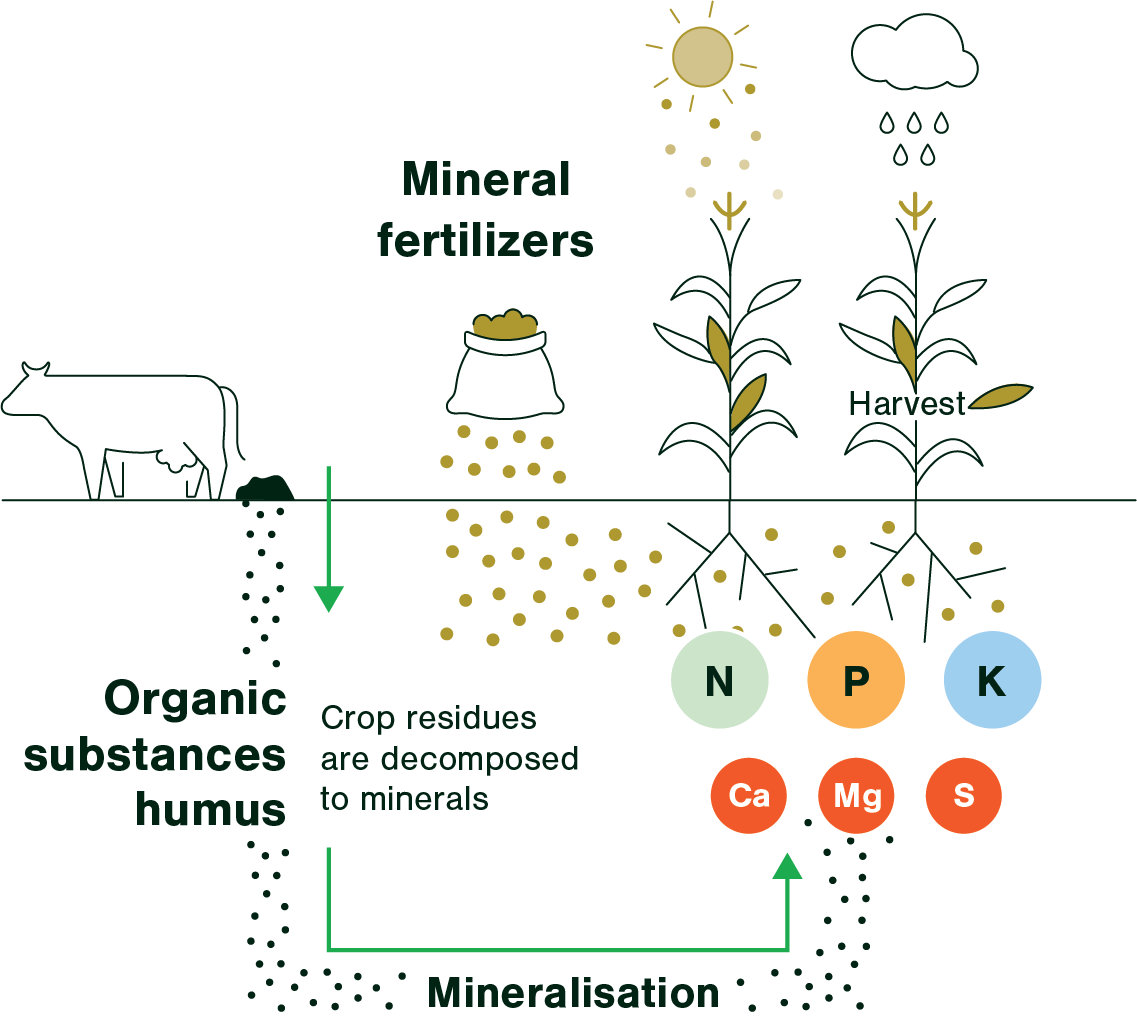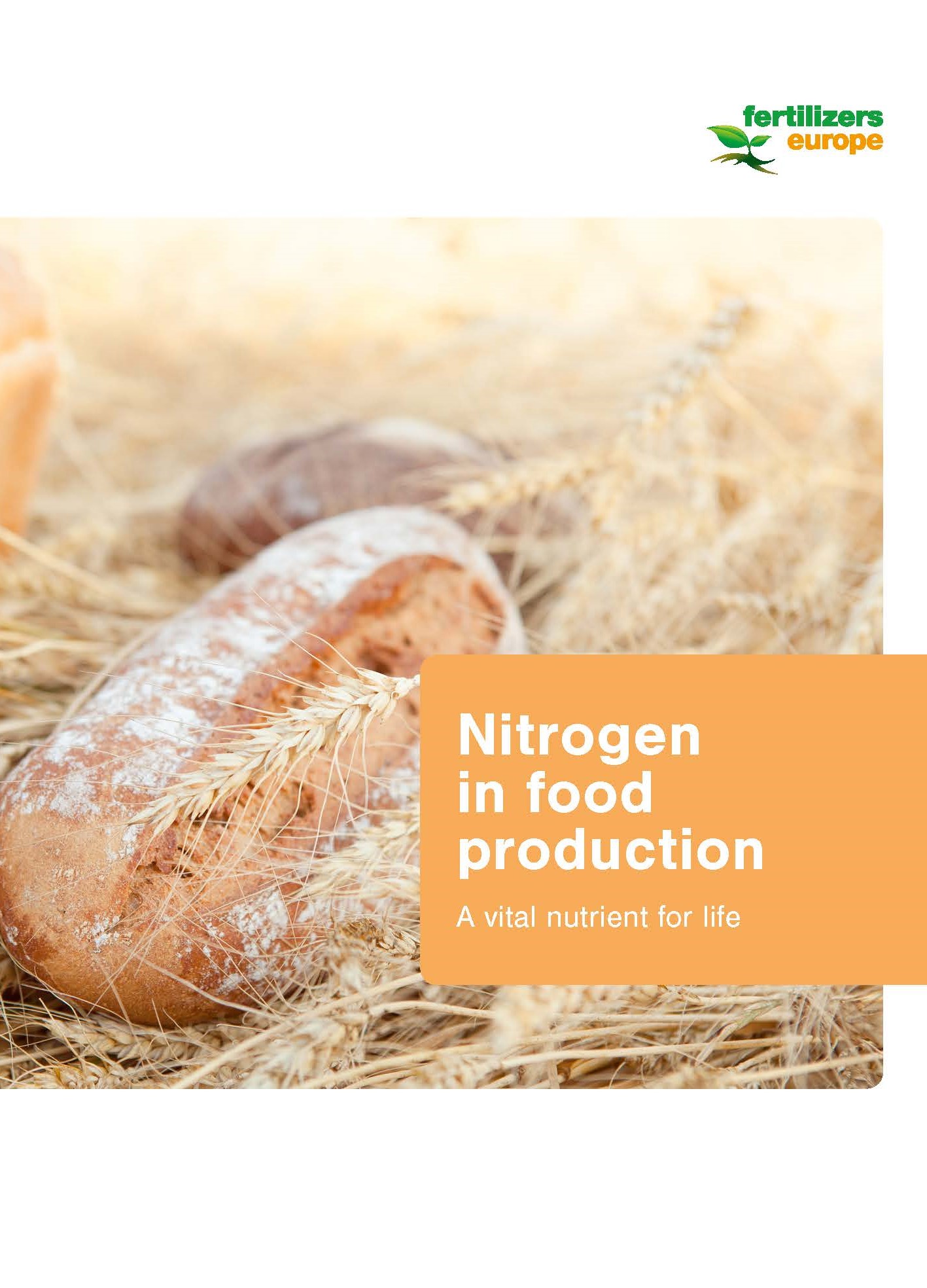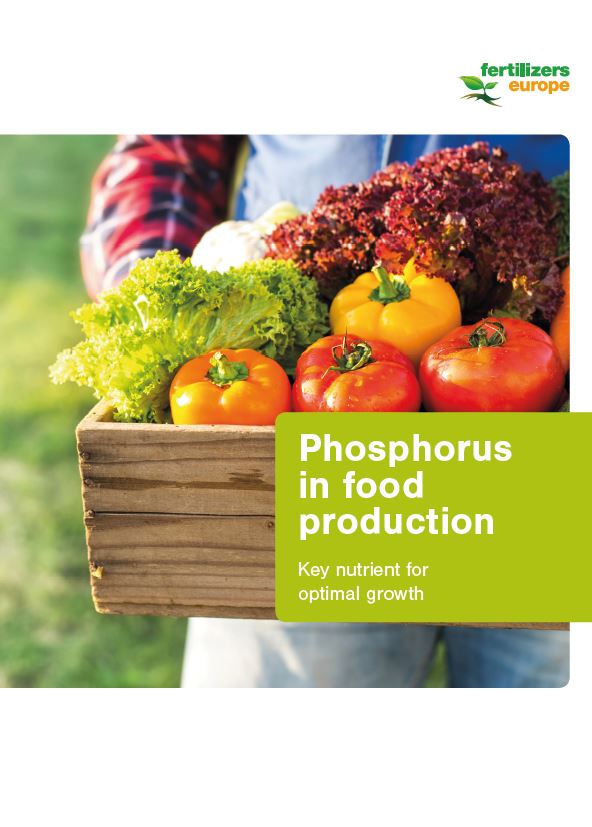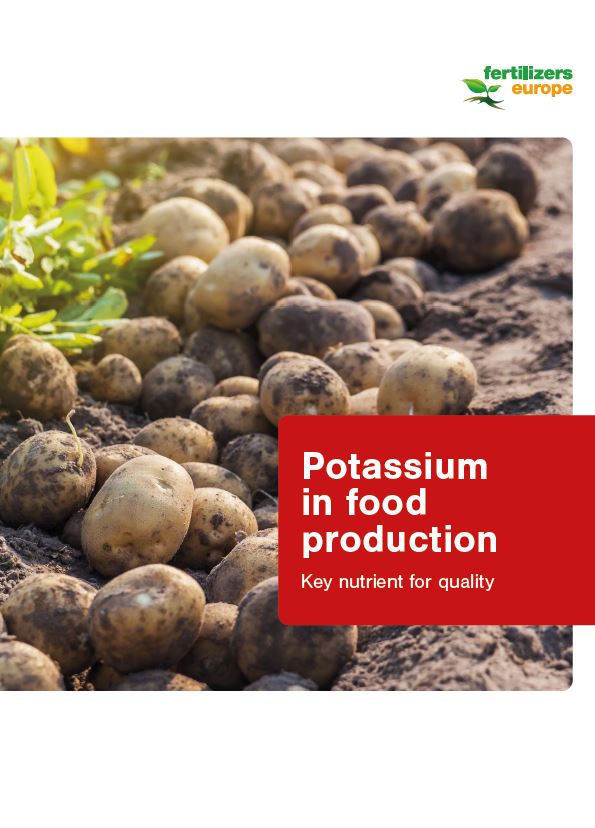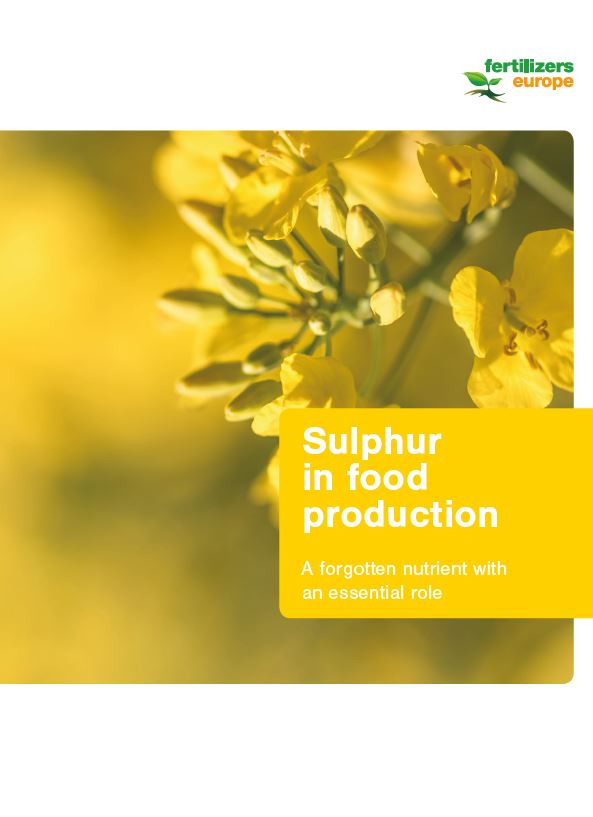Types of fertilizer
Plants need nutrients to grow which they absorb from the soil via the plant’s root system. Fertilizers provide the major nutrients (nitrogen, phosphorus and potassium and important secondary elements) that plants need. Unless the nutrients are replenished, the soil’s productive capacity declines with every harvest.
Mineral Fertilizers
The European fertilizer industry transforms millions of tons of naturally occurring raw materials such as air, natural gas and mined ores into high quality plant nutrition products .
Nitrogen fertilizers
Nitrate-based fertilizers are the most commonly used straight fertilizers in Europe.
The main products are nitrate-based fertilizers such as ammonium nitrate (AN) and calcium ammonium nitrate (CAN), which are well suited to most European soils and climatic conditions, and urea and urea ammonium nitrate (UAN) aqueous solution, which are widely used in other parts of the world.
Other straight nitrogen fertilizers include ammonium sulphate and ammonium sulphate nitrate, calcium nitrate, sodium nitrate, Chilean nitrate and anhydrous ammonia.
Nitrogen fertilizers with inhibitors
Certain weather and soil conditions can lead to nitrogen immobilisation, denitrification, volatilization or leaching, all reducing fertilizer efficiency. In response, the industry has developed special types of fertilizers designed to reduce these effects. They include foliar, slow and controlled release fertilizers, as well as fertilizer additives such as urease and nitrification inhibitors.
Phosphorus fertilizers
The most common phosphate fertilizers are single superphosphate (SSP), triple superphosphate (TSP), monoammonium phosphate (MAP), di-ammonium phosphate (DSP) and ammonium polyphosphate liquid.
Different fertilizer products have different release profiles and need different spreader settings for efficient application.
Potassium fertilizers
Potassium is also available in a range of fertilizers which contain potassium only or two or more nutrients and include Potassium chloride (KCl), Potassium sulphate (K2SO4) or sulphate of potash (SOP), Potassium nitrate (KNO3), known as KN.
Calcium, magnesium and sulphur Fertilizers
Calcium (Ca), magnesium (Mg) and sulphur (S) are essential secondary plant nutrients. They are not usually applied as straight fertilizers but in combination with the primary nutrients N, P, and K.
Sulphur is often added to straight N fertilizers such as ammonium nitrate or urea. Other sulphur sources are single superphosphate (SSP), potassium sulphate (SOP) and potassium magnesium sulphate (Kainite), the latter also containing magnesium.
Kieserite is a magnesium sulphate mineral that is mined and also used as fertilizer in agriculture, mainly to correct magnesium deficiencies. Calcium is mainly applied as calcium nitrate, gypsum (calcium sulphate) or lime/dolomite (calcium carbonate), of which calcium nitrate is the only readily plant available source of calcium.
Micronutrient fertilizers
Today, a large number of special fertilizers are available to supply plants with important micronutrients such as iron, manganese, boron, zinc and copper. These can be either inorganic or organic compounds, with the inorganic varieties further divided into water-soluble and non-soluble products.
Inhibitors
There are two major types of inhibitors today available for farmers in the EU.
Nitrification inhibitors are chemical compounds that delay the nitrification of ammonium by suppressing the activity of nitrosomonas bacteria in the soil. The objective is to preserve the ammonium in its soil-stable form and slow its conversion to nitrate. This temporarily reduces the proportion of nitrate in the soil, and thus the potential for leaching losses into water or the formation of N2O gas in the atmosphere.
- Urease inhibitors are chemical compounds that delay the first step of degradation of urea in the soil, the hydrolysis that can create NH3 emissions and which may occur before its transformation to ammonium. They contribute to reducing significantly ammonia emissions to the air, one of the major air pollutants.
Organic fertilizers
Crop residues, animal manures and slurries are the principal organic fertilizers. Although they have varying nutritional values, they are generally present on the farm and the nutrients and the organic carbon they contain are recycled. Animal manures and slurries cover a wide range of nutrient sources with different physical properties and nutrient contents. Furthermore, their nutrient content vary regionally and depend on the type of livestock and the farm management system.
Other types of Plant Nutrition
A wide range of so called fertilizing products can help farmers to adapt their fertilization practices to their environmental and farm conditions: organic fertilizer, organo-mineral fertilizer, mineral fertilizer incl. inhibitors, liming material, growing media, plant biostimulants etc.
